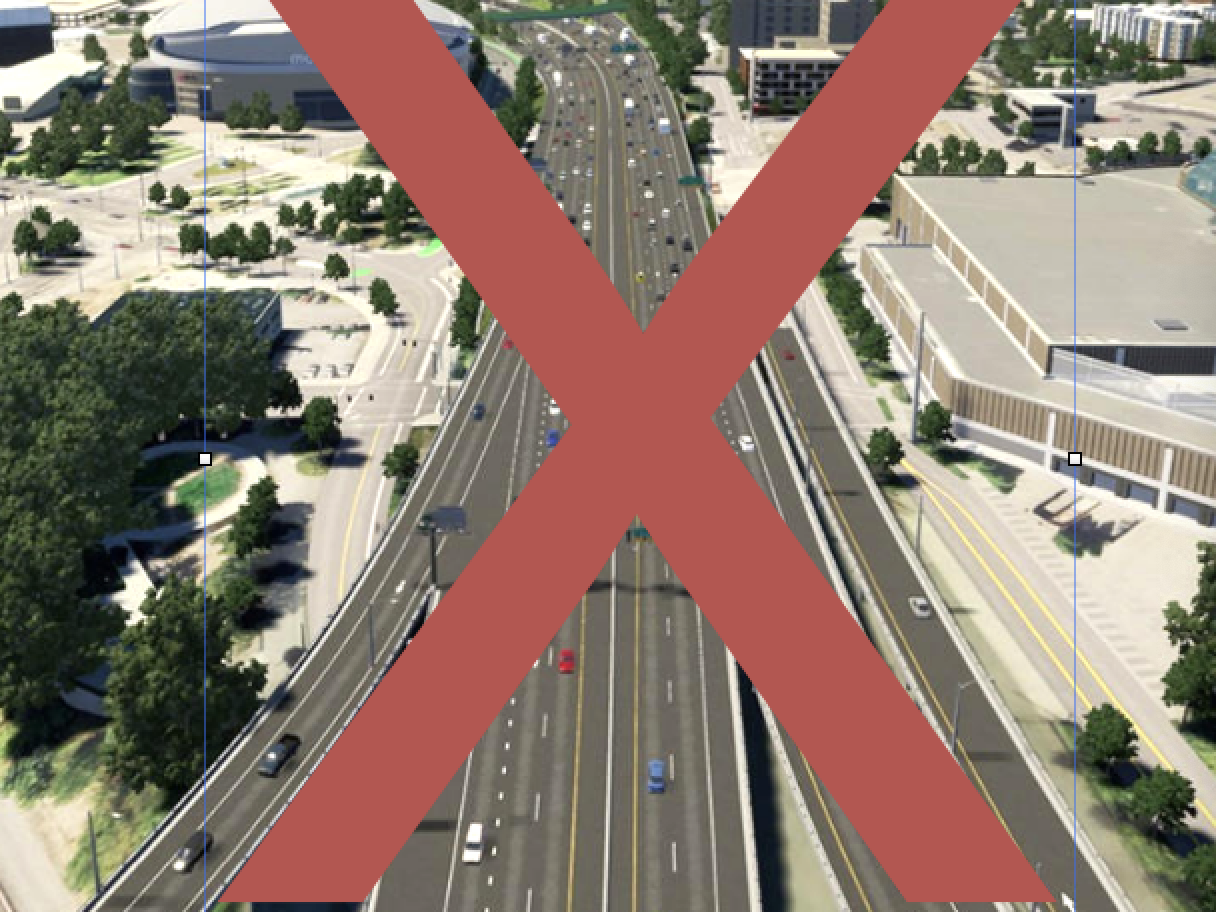In the past week, decisions in Salem and Washington DC have driven a stake through the heart of the $2.1 billion plan to widen a mile-and-a-half stretch of I-5 near downtown Portland.
The metaphor for this project is quickly changing from “driving stakes” to mark the start of construction, to driving a stake through the heart of speculative financial plans ODOT has spun.
On June 28, the Oregon Legislature adjourned sine die, without passing a major transportation bill. HB 2025 would have allocated $125 million per year to an “anchor project” fund that would have been used to finance the Rose Quarter and other megaprojects. Just prior to the session, ODOT conceded that it had a $1.3 billion “financial gap” in paying for the project. And that was before ODOT conceded that the cost was going to be even higher, rising from $1.9 billion to $2.1 billion.
On July 3, the US House of Representatives passed HR 1, the so-called “Big Beautiful Bill” which has trillions of dollars of tax and spending cuts. Among its least noticed provisions is Section 60019, which rescinds the funding for the “Neighborhood Access and Equity Grant Program,” which is the statutory name of what the US Department of Transportation has called “Reconnecting Communities.”
ODOT was counting on $450 million from this program to pay for the Rose Quarter project–and in effect, it was using the federal grant funds to get the highway widening project launched when it lacked full funding for the project.
HR 1 rescinds the “unobligated” portion of the funds from this program. It remains to be seen exactly how much has been “obligated” and how much remains “unobligated,” but it is likely that $300 to $400 million of the grant funds fall into the “unobligated” category and will be rescinded.
Never mind that the Legislature declined to provide funding for the project, or that both the House and Senate passed versions of the BBB Act eliminated federal funding for reconnecting communities, ODOT continues to pretend that it will blunder ahead with a ground breaking. Oregon Public Broadcasting reports
ODOT says it has no plans to change course now that the transportation package has failed.
The first phase of the project, which breaks ground next month, is fully funded. The next phase, set for 2027, includes building out a portion of the highway cover, and will rely on the federal grant.
Despite questions, project spokesperson Rose Gerber said Wednesday the federal money is still on track to arrive.
As we’ve pointed out, this is the agencies attempt to “drive stakes and sell bonds”–i.e. do anything to get construction started on a project to force the Legislature to come up with whatever it costs to finish this project. And that strategy seems doomed. State Representative Mark Gamba, interviewed on Bike Portland said:
BikePortland
What does the failure of the transportation package mean for the I-5 Rose Quarter project?
Representative Gamba
Rose Quarter needed this bill to happen. I don’t know how they start actual construction on the Rose quarter now, without some bill that begins to create that level of funding just to pay for the bond.
An Unfortunate Juxtaposition: Ground-breaking and layoffs
While ODOT says it has no plans to cancel its ground-breaking, the event would be present a jarring contradiction. Launching –at $2.1 billion–the most expensive project it has ever undertaken and (for which it lacks funding), while laying off hundreds of long-time ODOT employees, because it says it doesn’t have enough money (even though its revenues have been going up). It’s worth remembering that the Rose Quarter project was sold in 2017 as costing a mere $450 million, but has since more than quadrupled in price, a common problem for major ODOT projects.
The reality is that the I-5 Rose Quarter project is dead. It may shamble on for a while, zombie-like, but very quickly ODOT and state leaders will need to acknowledge that they simply don’t have any way to pay for this grotesquely expensive project and that they can’t do that at the same time they are doing real damage to the state highway agency.

